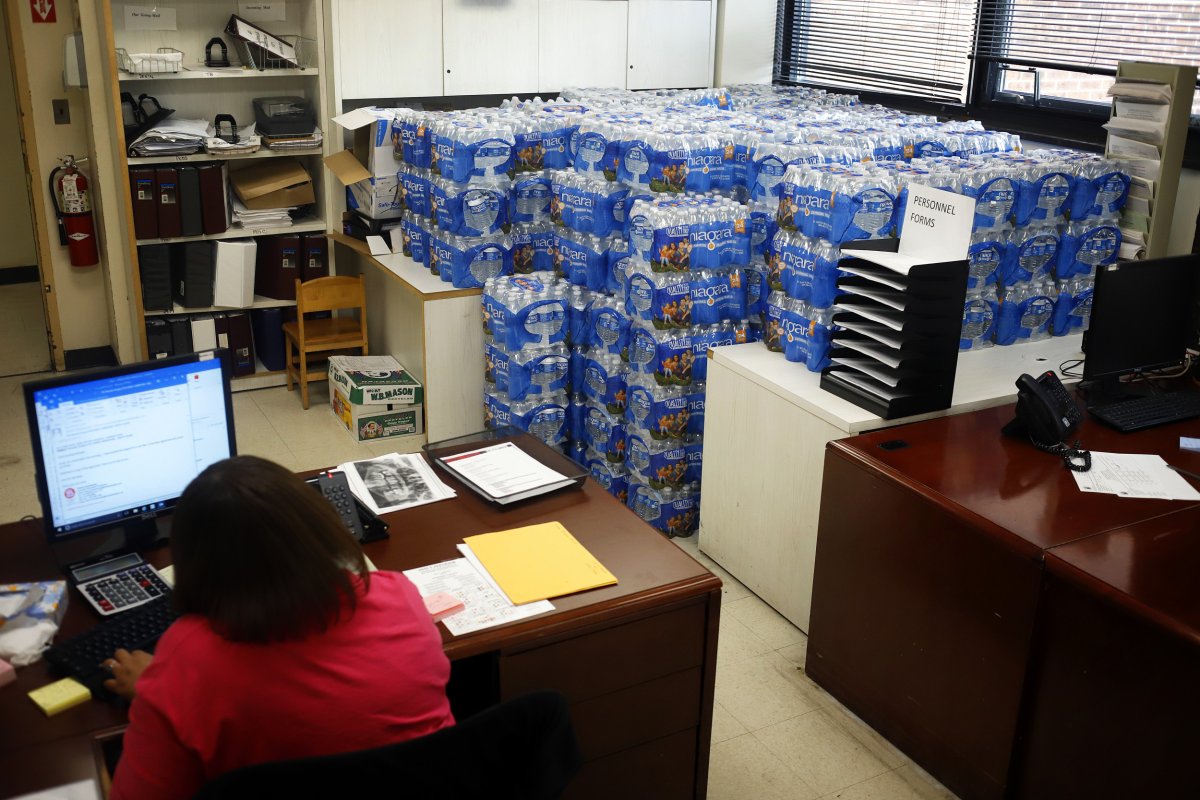Millions of Americans are drinking unsafe water because the federal drinking water standards are outdated, according to the latest analysis from the Environmental Working Group.
The organization updated its searchable Tap Water Database on Wednesday to include analysis of tests conducted by external entities between 2016 and 2017. After scrutinizing 32 million results for 517 contaminants or groups, the organization said that chemicals proliferate in almost 50,000 water utilities across the country.
More than 160 substances found in U.S. tap water are unregulated and the Maximum Contaminant Levels for some other contaminants haven't been updated in almost five decades, the EWG said. This means that though drinking water may meet national standards, it doesn't render it safe, the group said.
"The majority of water systems in the U.S. get a passing grade from the U.S. government," EWG toxicologist Alexis Temkin told Newsweek. But "legal doesn't necessarily mean safe."
More than 100,000 lifetime cancer cases are expected to be caused by the contamination levels in drinking water, according to the analysis.
Some 66 million Americans drink water tainted by with nitrate at levels 10 times above what the EWG says is safe. Seventy-eight contaminants were associated with nervous system damage and 63 were linked to developmental harm. Arsenic, which is found in water in all 50 states, is permitted in water at levels that can endanger the public, the analysis said. Carcinogen Chromium-6 is in the water of 200 million Americans, the organization said.
At least 610 locations across 43 states have been infected with Per- and Polyfluoroalkyl Substances, or PFAS, as of March 2019. The so-called "forever chemicals," found in consumer products and commercial household products, have been linked to a range of dangerous health effects, including reproductive, developmental and immunological problems in animals, as well as low infant birth rates and cancer for PFOAs.
"The Safe Drinking Water Act is broken and has failed to ensure that millions of Americans are protected from toxic chemicals and dangerous pathogens in their drinking water," Erik Olson, senior strategic director of health and food at the Natural Resources Defense Council, told Newsweek when asked whether the SDWA had stringent enough protections. "We need to fix the law, and EPA must enforce it, so that when we turn on our taps, we can be confident that our families are getting pure, safe water."
The EPA told Newsweek that it is "moving forward with the drinking water standard setting process outlined in the Safe Drinking Water Act (SDWA) for PFOA and PFOS. As the next step in this process, EPA will propose a regulatory determination for PFOA and PFOS by the end of this year." The EPA spokesperson also said that "over 92 percent of the population supplied by community water systems receives drinking water that meets all health-based standards all of the time. EPA is working aggressively with our state partners to push that number higher."
From 1982 to 2015, as many as 45 million people in the U.S. drank water that did not meet the standards of the SDWA, according to a recent study. Between 2015 and 2018, 5.5 million people in the U.S. received water from systems that violated federal lead standards. The water crisis in Flint, Michigan, and the more recent crisis of lead-contaminated water in Newark, New Jersey, have drawn attention to dangerous water crises in America. But according to numbers gathered by the EWG, America's clean water crisis appears much more widespread.
"It is shameful that every American – no matter where they live, no matter how much money they have – can't be sure their tap water is safe," the EWG said.
While the EWG has proposed its own standards for safe contaminant levels, the organization also offers recommendations for ensuring water is clean. The EPA did not comment for this article.
Clarification: Wording in the third paragraph has been changed to more clearly indicate that Maximum Contaminant Levels for only some contaminants have not been updated in almost fifty years.
This article has been updated to include comments from the EPA.

Uncommon Knowledge
Newsweek is committed to challenging conventional wisdom and finding connections in the search for common ground.
Newsweek is committed to challenging conventional wisdom and finding connections in the search for common ground.
About the writer
Daniel Moritz-Rabson is a breaking news reporter for Newsweek based in New York. Before joining Newsweek Daniel interned at PBS NewsHour ... Read more
To read how Newsweek uses AI as a newsroom tool, Click here.








